The Department of Commerce's Inspector General provided an independent review on how the National Oceanic and Atmospheric Administration reacted to the leak of e-mail messages from the Climatic Research Unit at the University of East Anglia.
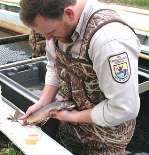
With SUNY, the universities will monitor temporal trends in bioaccumulative chemicals in the Great Lakes using top predator fish as biomonitors.
McGill researchers develop a new and inexpensive way of filtering water using silver nanoparticles.
The Water Environment Federation will offer one article per issue of its journal online.
The support will be given to the university system in Kansas, where the company is headquartered, over the next 10 years.
Natural estrogen from multiple sources actually accounts for much more of the total contribution.
The battery is based on a high-capacity nanostructured tin-carbon anode and a high-voltage lithium-ion cathode.
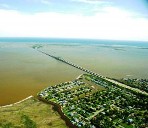
The Stony Brook University and Woods Hole Oceanographic Institution study used the genome sequence of Aureococcus anophagefferens and found that it is genetically predisposed to exploit certain characteristics of human-modified coastal ecosystems.
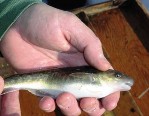
Slight alterations in a gene encoding a protein known to regulate PCB's toxic effects were found in the fish.

In the study, something released by algae, other than microcystins, had an endocrine disrupting effect on zebrafish.
In collaboration with the United Kingdom, the agency and the Consumer Product Safety Commission are pooling funds to determine whether health risks exist in products using nanotechnology.
America’s WETLAND Foundation has launched an 18-month program that will involve communities from Texas to Florida.
Shipping and growing Chinese economy top growth in analysis of 150 years of emissions.

The Sunshot program will receive $27 million in projects to advance manufacturing while wind initiatives will include $50 million in research and development.
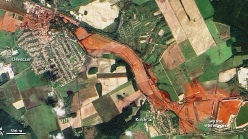
Testing showed that plants grew 25 percent slower in contaminated soil, but researchers suggested high alkalinity was the problem and that could be managed by adding gypsum to the red mud.
EPA awarded the foundation $600,000 to help determine if the technologies could reduce the need to replace lead lines that carry drinking water.
Pureti was applied to asphalt and concrete paving near the LSU campus; Professor Hassan is monitoring air quality and groundwater runoff from the site.
A new spacing formula based on wind tunnel testing recommends turbines be spaced 15 rotor diameters apart, more than half the current standard.

A University of Alabama graduate student is using Clostidium pasteurianum bacteria to break down a biodiesel waste product and find uses for its byproducts: butanol, propanediol, and ethanol.
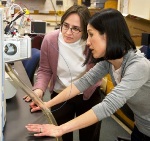
The good news is that the dispersant stayed in the deep ocean after it was first applied; the bad news is that it stayed in the deep ocean and did not degrade.